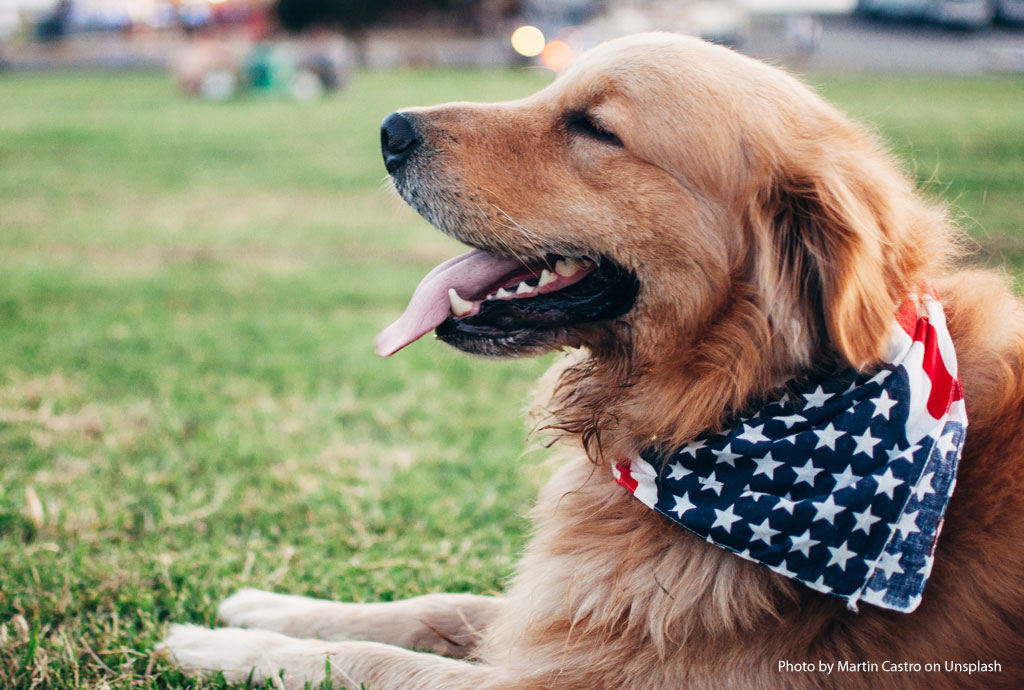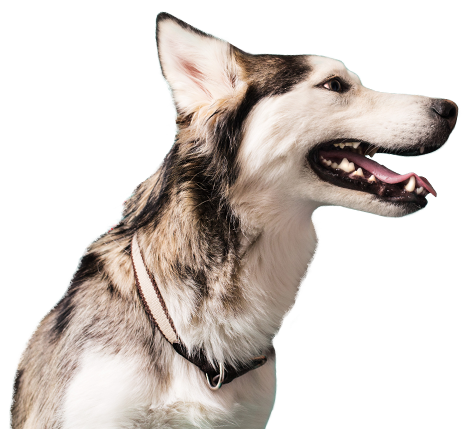
How Canine Heat Stroke Happens
The days are heating up and the risk of hyperthermia or canine heat stroke is a danger for pets. Dogs are particularly high risk. We tend to think they are super human and can go miles on a walk. In reality, we are better suited for being outdoors in heat.
When a person (or a pet) reaches a core temperature above 105 degrees there is danger of damage, not just to the brain, but to all organs. The intestines are especially at risk for overheating due to all of the bacteria they harbor. Humans walk out the door at a cool 98.6. An excited dog may actually be higher than their normal 102.5 degree temperature. They do not have far to go to reach 105.
Outdoors, you will begin profusely sweating. Your skin is your largest organ, so evaporation is an efficient cooling mechanism. As you dehydrate, you may even take a bottle of water with you on the walk. Your light, white, airy clothing keeps you cool as well. Other than some discomfort, humans handle the heat quite well.
On the other hand, dogs only sweat slightly in their feet. They must rely on the exchange of heat through their mouth and tongue as they pant. You will see their respiratory rate increase and their tongue increase in size and length in an effort to cool themselves. Remember dark colored pets, such a black Rottweiler, will heat faster than a white dog.
Canine Heat Stroke in Specific Breeds
Let’s not forget that some breeds are already challenged to breathe under normal circumstances. This includes the brachycephalic dogs that have the flat faces: Bulldogs, Frenchies, Pekinese, Shih tzus to name a few. Their closed nostrils, long soft palate, and small diameter breathing tube or trachea, put them at severe high risk for heat stroke. They should have extremely limited time outdoors and never be without direct supervision.
Canine Heat Stroke Precautions
Of course your pet will stick his tongue into a cool bowl of water, but remember it’s the heat and not dehydration that is the concern. Give them water to drink but also wet them down, especially over the head and neck.
Dogs also do not understand what is happening to their body and the degree of danger they are in. They want to please and will never give up the walk until they collapse.
It is up to the owner to be aware that more precautions must be taken when walking a dog in this heat.
- Pick the coolest times to walk your dog such as the early morning or late evening.
- Acclimate your pet to longer walks. Do not just start out at 2 miles. Work up to a longer walk, like any athlete would.
- WET YOUR PET WITH A HOSE ALL OVER BEFORE THE WALK. Allow him/her to evaporate and cool like you. Do this BEFORE you walk as well as afterwards. Remember we want to PREVENT the increase in body temperature.
- Stay in the shade or on the grass as much as possible.
- Monitor your pet’s breathing and plan on the length of time that the return trip is going to take.
- Remember that older pets, or those with health issues such as arthritis, heart conditions or heart murmur, or obesity need to be exempted from long walks for “exercise” or weight loss”. Would you take your overweight, 80 year old grandmother with bad knees on a 2 mile walk for exercise? Exactly!
Non-emergency Canine Overheating
If you think your pet is overheated, but does not need emergency care, wet him all over and use a fan to cool him down. Take his temperature repeatedly. Temperatures in pets are taken rectally with a digital thermometer and some lube. Transfer him to a veterinary hospital if the temperature is 105 degrees or higher.
Stay cool and stay safe!
Dr. Katherine Murphy

Contact Us
Regular check ups with a veterinarian are important for your pet's health. Contact us today to schedule your next appointment.





